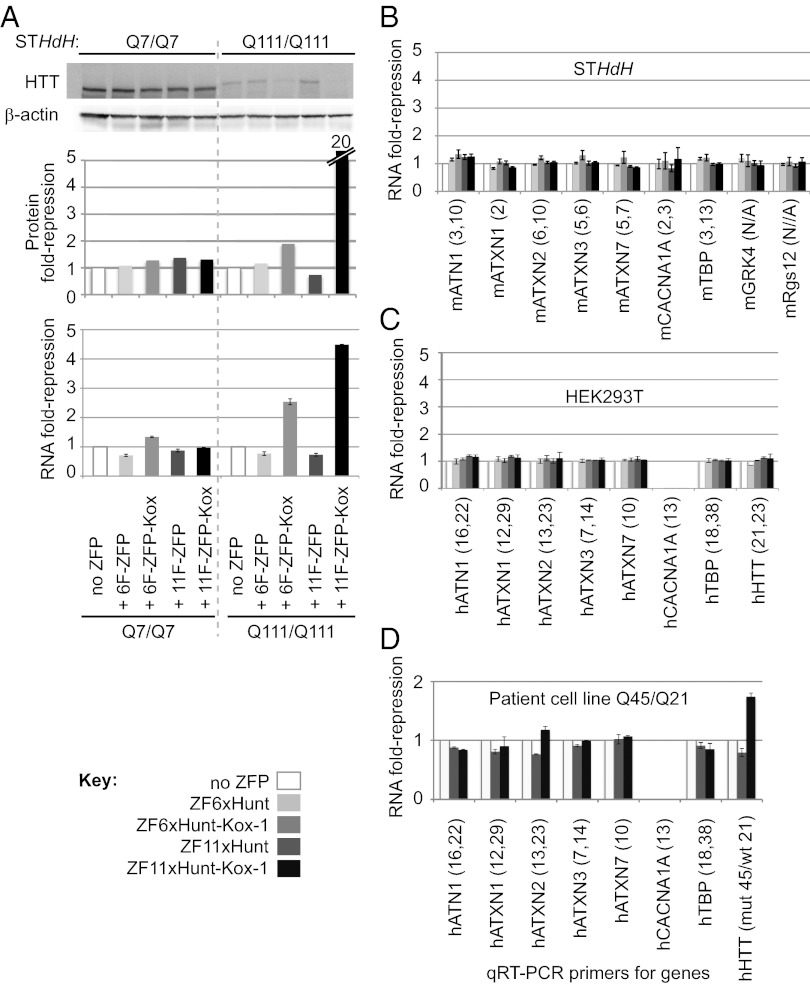Fig. 4.
Expression of chromosomal CAG-repeat genes 20 d after retroviral ZFP delivery. Assays were carried out in wt mouse STHdh cells (Q7/Q7), in polyQ STHdh mutants (Q111/Q111), and in human HEK293T cells, as indicated. Mouse and human genes are prefixed by “m” and “h,” respectively. (A) Repression of endogenous HTT by ZF6xHunt and ZF11xHunt, with and without Kox-1 repressor domain. Western blots for HTT (Top) were controlled with β-actin staining and quantified using ImageJ (protein fold repression; Middle). qRT-PCR was used to compare HTT mRNA levels (RNA fold repression; Bottom). The experiment was repeated independently three times with similar results; one experiment is displayed. (B) mRNA levels of other wt CAG-repeat genes are broadly unaffected in STHdh cells (pooled samples: 3 Q7/Q7 and 3 Q111/Q111). Seven genes were tested by qRT-PCR (ATN1, atrophin1; ATXN1–3, 7, ataxin-1–3, 7; CACNA1A, calcium channel α1A subunit; TBP, TATA binding protein). CAG-repeat numbers are in brackets; the first number corresponds to pure CAG repeats, and the second number corresponds to broken CAG repeats (containing CAA or CAT). Two genomic neighbors of HTT [G protein-coupled receptor kinase 4 (GRK4), ∼7 kb upstream; G protein signaling 12 (Rgs12), ∼188 kb downstream] were also unaffected in STHdh cells. (C) mRNA levels of the seven wt human CAG genes and HTT (21 repeats) were also broadly unaffected in HEK293T cells. (D) ZF11xHunt–Kox-1 represses only HTT in a heterozygous human patient-derived cell line (mutant Q45/wt Q21). RNA was extracted from FACS-sorted transduced cells 7 d after infection. (CACNA1A is not expressed in HEK293T cells or the Q45/Q21 patient cell line.)

